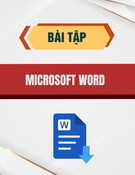
21.1 Silberschatz, Galvin and Gagne ©2009
Operating System Concepts – 8th Edition Silberschatz, Galvin and Gagne ©2009
Operating System Concepts – 8th Edition
Chapter 21: The Linux System

21.2 Silberschatz, Galvin and Gagne ©2009
Operating System Concepts – 8th Edition
Chapter 21: The Linux System
■Linux History
■Design Principles
■Kernel Modules
■Process Management
■Scheduling
■Memory Management
■File Systems
■Input and Output
■Interprocess Communication
■Network Structure
■Security

21.3 Silberschatz, Galvin and Gagne ©2009
Operating System Concepts – 8th Edition
Objectives
■To explore the history of the UNIX operating system from which Linux is derived and the principles which
Linux is designed upon
■To examine the Linux process model and illustrate how Linux schedules processes and provides
interprocess communication
■To look at memory management in Linux
■To explore how Linux implements file systems and manages I/O devices

21.4 Silberschatz, Galvin and Gagne ©2009
Operating System Concepts – 8th Edition
History
■Linux is a modern, free operating system based on UNIX standards
■First developed as a small but self-contained kernel in 1991 by Linus Torvalds, with the major design goal
of UNIX compatibility
■Its history has been one of collaboration by many users from all around the world, corresponding almost
exclusively over the Internet
■It has been designed to run efficiently and reliably on common PC hardware, but also runs on a variety of
other platforms
■The core Linux operating system kernel is entirely original, but it can run much existing free UNIX software,
resulting in an entire UNIX-compatible operating system free from proprietary code
■Many, varying Linux Distributions including the kernel, applications, and management tools

21.5 Silberschatz, Galvin and Gagne ©2009
Operating System Concepts – 8th Edition
The Linux Kernel
■Version 0.01 (May 1991) had no networking, ran only on 80386-compatible Intel processors and on PC
hardware, had extremely limited device-drive support, and supported only the Minix file system
■Linux 1.0 (March 1994) included these new features:
●Support for UNIX’s standard TCP/IP networking protocols
●BSD-compatible socket interface for networking programming
●Device-driver support for running IP over an Ethernet
●Enhanced file system
●Support for a range of SCSI controllers for
high-performance disk access
●Extra hardware support
■Version 1.2 (March 1995) was the final PC-only Linux kernel

![Bài giảng Phần mềm mã nguồn mở [mới nhất]](https://cdn.tailieu.vn/images/document/thumbnail/2025/20250526/vihizuzen/135x160/6381748258082.jpg)


![Bài giảng Hệ điều hành: Trường Đại học Công nghệ Thông tin (UIT) [Mới nhất]](https://cdn.tailieu.vn/images/document/thumbnail/2025/20250515/hoatrongguong03/135x160/6631747304598.jpg)


![Bài giảng Hệ điều hành Lê Thị Nguyên An: Tổng hợp kiến thức [mới nhất]](https://cdn.tailieu.vn/images/document/thumbnail/2025/20250506/vinarutobi/135x160/8021746530027.jpg)










![Đề thi Excel: Tổng hợp [Năm] mới nhất, có đáp án, chuẩn nhất](https://cdn.tailieu.vn/images/document/thumbnail/2025/20251103/21139086@st.hcmuaf.edu.vn/135x160/61461762222060.jpg)


![Bài tập Tin học đại cương [kèm lời giải/ đáp án/ mới nhất]](https://cdn.tailieu.vn/images/document/thumbnail/2025/20251018/pobbniichan@gmail.com/135x160/16651760753844.jpg)
![Bài giảng Nhập môn Tin học và kỹ năng số [Mới nhất]](https://cdn.tailieu.vn/images/document/thumbnail/2025/20251003/thuhangvictory/135x160/33061759734261.jpg)
![Tài liệu ôn tập Lý thuyết và Thực hành môn Tin học [mới nhất/chuẩn nhất]](https://cdn.tailieu.vn/images/document/thumbnail/2025/20251001/kimphuong1001/135x160/49521759302088.jpg)


